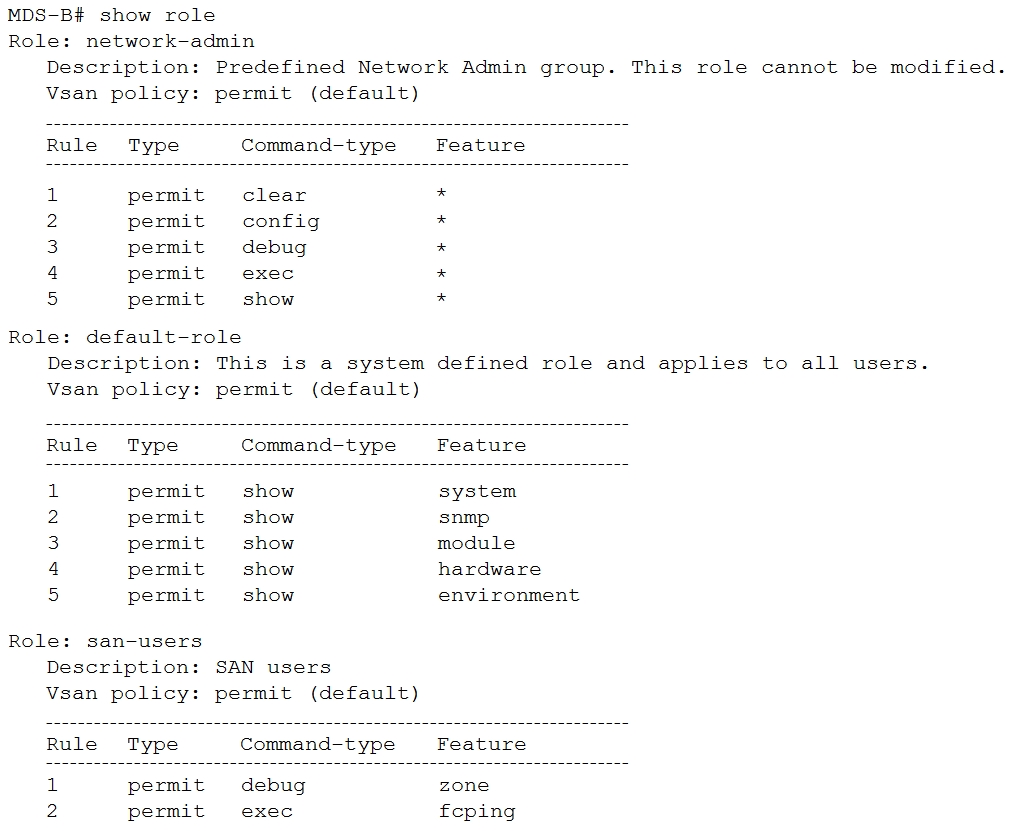


Refer to the exhibit. A network engineer created a new role to be assigned to the SAN users. The requirement is for users to have these characteristics:
* permitted to show access to the system, SNMP, module, and hardware information.
* permitted to run debug zone and exec fcping commands.
* restricted from accessing show feature environment command.
Which configuration set meets these requirements?
DSAM9
2 weeks, 2 days agoDSAM9
2 weeks, 2 days agobizzar7774
2 months agoU_O
7 months, 3 weeks agoScheldon
10 months agoC4rlos
1 year, 2 months agoC4rlos
1 year, 2 months agoGuyThatTakesDumps
1 year, 5 months agoharmann
1 year, 6 months agoSalilgen
1 year, 5 months ago25e4462
6 days, 6 hours ago